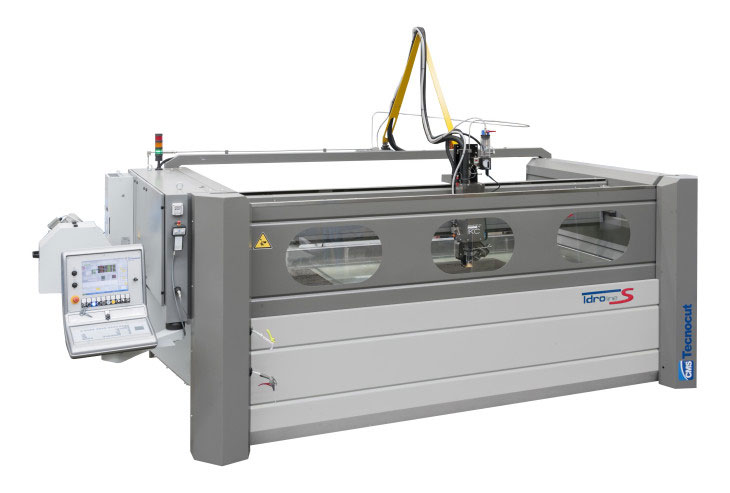
Waterjet cutting is one of the most effective methods of machining materials. With no heat affected zone, small cutting widths and omni directional cutting, virtually any material can be cut with precision and accuracy. Because of this, waterjet cutting results in better product finish with little or no secondary processing needed. In addition, waterjet cutting is more environmentally friendly as the dust, chippings or gas produced by other cutting methods does not occur. In addition, as there is no need to change tool heads, blades or lubricants for each material, machining time is also reduced.
Plastic, rubber, wood, glass, metals and composite materials can all be cut using a pure waterjet or hydro abrasive waterjet cutting. For some materials the addition of an abrasive agent is needed to aid effective cutting. Below is an overview of the types of materials that can be cut.
Composites
Composite materials can be affected by the heat in other cutting methods. Each composite element may react differently meaning the overall structure of the material can be weakened. This does not occur with water jet cutting methods as there is o heat affected zone. All sorts of composites such as carbon fibre reinforced plastics, glass reinforced plastics and other composites can be machined.
Glass
Yes, most glass can be cut using a water jet; the only exception being tempered glass, which by its very nature is designed to shatter if cut or broken.
Rubber & Plastic
As you’d expect, soft materials can be easily cut using a water jet. For harder or reinforced materials, an abrasive agent gets added to the water jet.
Stone & concrete
Structural and architectural items can be cut; wall panels, counter tops and patterned floor stones and tiles can all be cut. The versatility of water jet cutting means that wall panels etc. can be much more artistic in design. Architects and designers can use more ‘sculptural’ ideas within their projects. Ceramics are included in here too.
Metals
As you’d expect , with no heat affected zone in waterjet cutting, the list of metals that can be cut is long. Steels, alloys, aluminium, titanium, copper and brass are the main ones that head up the list. Even the more exotic alloys like Inconel can be cut. Polished or reflective surfaces that can cause problems for other cutting methods, can be cut using the waterjet cutting systems. For the more expensive raw materials the small kerf and lack of a need for ‘pilot’ holes to be drilled as starting points mean that there is much less material waste and can result in cost savings.
Here at PRV Engineering the accuracy and versatility that waterjet cutting gives us ensures we provide the best service possible to our customers. We use the Idroline S1730 hydro-abrasive waterjet cutting system which uses a pure high pressure water jet or a combination of water and abrasive. We have the flexibility to manufacture parts in any type of material.

This site uses Akismet to reduce spam. Learn how your comment data is processed.


 Mail:
Mail: 




Leave a Comments